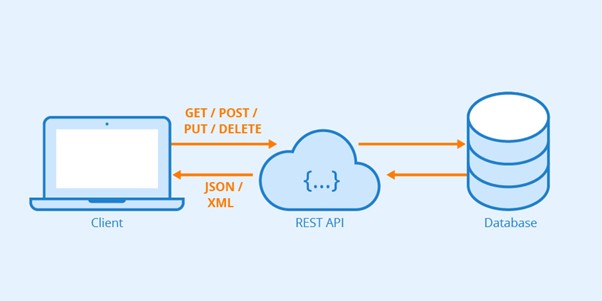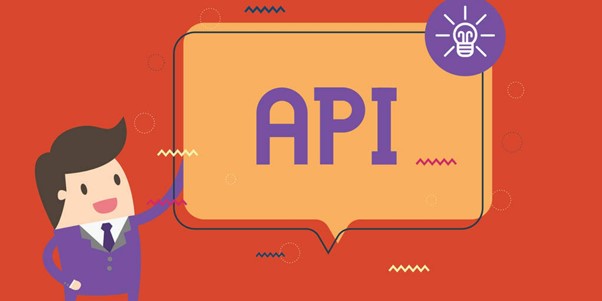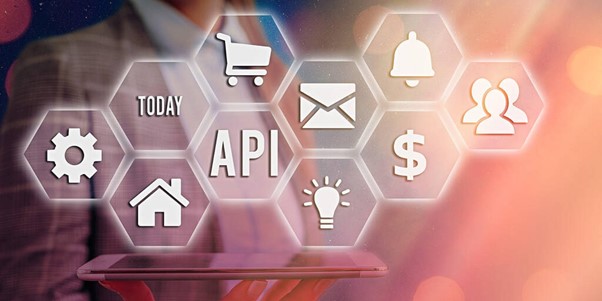API and B2B integrations have become an important function in tech for automating business processes that utilize apps and web interfaces. It’s okay if you have no clue about it since this is a highly specialized field of computer software engineering.
Don’t worry, as we are here to discuss all things API integrations in a simple language that anyone can easily understand.
What Is an API?
First, let’s understand the concept of an API. API stands for Application Programming Interface. It is a collection of interactive definitions, protocols, and instruments that communicate with one another. It helps a user to coordinate with a web-based tool.
APIs are the reason users can interact on the tool interface and want to perform an action or request data. After the interaction, the application transfers the data to an API. Then, it will offer a solution to the requested action. Finally, API translates the returned data into an understandable format.
What Are API Integrations?
Now with that information, it will become easier for you to understand this process. API integration means connecting two or more tools through APIs so that the tools can exchange data sources.
As you can see, this integration process allowa you to automate the tasks and improve the app performance and functionality. It enables companies to perform operations seamlessly and deliver information quickly. That is why it is crucial for businesses of any size.
How Does an API Work?
You can compare the working style of an API with the activity of a waiter. As a restaurant waiter works as the intermediary between the customer and kitchen, An API performs the same role between a user and the service they want to access.
When you visit a website or tool and try logging in using your social media profile, an API forwards the request to the chosen social network for verification. After verification, it lets you access the service you want to get. APIs simplify the process for both you and the app.
REST API: The Most Common API for Web-Based Services

REST API is the most popular and common type of API to integrate more than one tool on web-based apps It stands for Representational State Transfer API. The API uses a URL structure and JSON programming language to establish communication between two tools.
REST API has wide and generalized applications including web-based services where organizations need to merge CRM with marketing tools, sales tools, and content management tools.
These APIs offer you more flexibility with a flat learning curve. It functions directly from an HTTP URL. For this reason, 70% of public APIs you see today are REST APIs. however, this API will only work on web-based tools.
Example of Widely Used APIs

.Here are some of the prevalent API or B2B Integrations of today’s time that will help you understand the concept better.
1. Google Maps
Google Map gets more than a billion users each month and you could be one of them. The app lets you navigate through all corners of the world. Now, what the Google Maps API does is let other organizations integrate the features of Google Maps into their own tool or services.
This API saves the other app or service providers from building an app with similar functions from scratch. One instance is the ride-sharing app Uber using Google Maps API. Both drivers and riders can find each other, check out the fastest route, and locate high-traffic roads using this API.
2. Weather
Another common API many websites and tools use is weather API. Developers use one of the various free and paid weather APIs available currently. It lets the users retrieve weather information from any app or website without the developers building the service on their own.
One example could be the API of the National Weather Service. With this API, developers can access weather data, including forecasts, observations, and critical alerts.
3. Twitter API
Twitter is a popular social media with more than 330 million active users. You don’t have to access the platform directly to start a conversation or engage with fellow Twitterati.
Using Twitter API, you can easily access Twitter for effective engagement and conversation analysis. Your team and business can easily tap into the essential elements of this social media platform. For example, Lists, Tweets, Spaces, Direct Messages, Users, and many more become available in your own app or website.
The latest of Twitter API is the Twitter API v2. It comes with different access levels like Academic Research, Essential, and Elevated.
4. PayPal API
PayPal API lets you make payment via this popular online payment system. You can compare it with the functions of social media login. The Pay with PayPal feature lets the end-application access the functions it needs.
The tool sends the amount and other related info while making an order to this API. Next, the purchase and user identity get verified. Once done, the API confirms the payment to the app. As a customer, you don’t see all these during the transaction, but it is the API that makes payments as soon as possible.
The Benefits of API Integrations

You might wonder about the necessity of using API in other tools and websites. Here are the top benefits of API integrations.
1. Automation
The biggest advantage of using API or B2B integration is it allows automatic data transfer between multiple applications. Through successful automation, you can eliminate the human component from the process. As a result, the required time and cost will reduce significantly.
Let’s say your business process requires accurate location data to be included in product delivery push messages or emails that you send to the partner driver. Instead of recruiting an executive to manually take screenshots from Google Maps and embed that into the notifications or emails, integrate your CRM with Google Maps API for automated location fetching.
2. Scalability
Businesses don’t have to worry about scalability while using API integration. They can grow and use APIs that suit their needs. There is no need to develop a new system for connecting the applications.
Let’s consider that your company handles post many LinkedIn or Twitter messages throughout the week. Managers, public relations, and HR executives can post social media content right from your content management system if you use APIs for Twitter or LinkedIn.
3. Integration
It makes data retrieval or data integration from multiple websites and tools easier. It also ensures fluid information transmission and an integrated user experience. Such integrations also help to smoothen the data exchange process.
Let’s say that your business process relies on real-time data from several tools like spreadsheet apps, customer survey apps, billing software, delivery tracking app, and so on. You can drive productivity and thus profitability if you can integrate all of these data sources in your master CRM.
Hence, neither you nor your employees will have to swap multiple apps to copy-paste data. Instead, fetch information on customers or orders automatically and provide the best-in-class service.
4. Streamlined Communication and Visibility
This strategy makes sure that you have streamlined communication and reporting by offering perfect end-to-end visibility of all systems and processes.
It helps you to track and monitor data effectively. As a result, you can create robust reports on the premise of the comprehensive datasets that you get.
If you want to know more about the benefits of API or B2B integrations, you can read our blog on the top benefits of API integrations and why most companies are adopting them.
Al Rafay Consulting Offers Reliable API Integration for Businesses
With the proper utilization of APIs, businesses can get significant benefits. In fact, companies can look forward to enhanced features of API integrations that make it more powerful.
We’ve got some effective API solutions like Entrata API, MRI API for real estate property management, Ticketmaster API for events, and many more. We’re also able to explore more API solutions should your business require.
With Al Rafay Consulting, you can successfully integrate APIs that suit your organizational needs to get the perfect and complete solution. We help you reduce manual labor and focus on more important things by building automated workflows with integrated APIs.
We have already developed numerous data analytics solutions through API or B2B integrations including deal tracking software for REIT industry.


